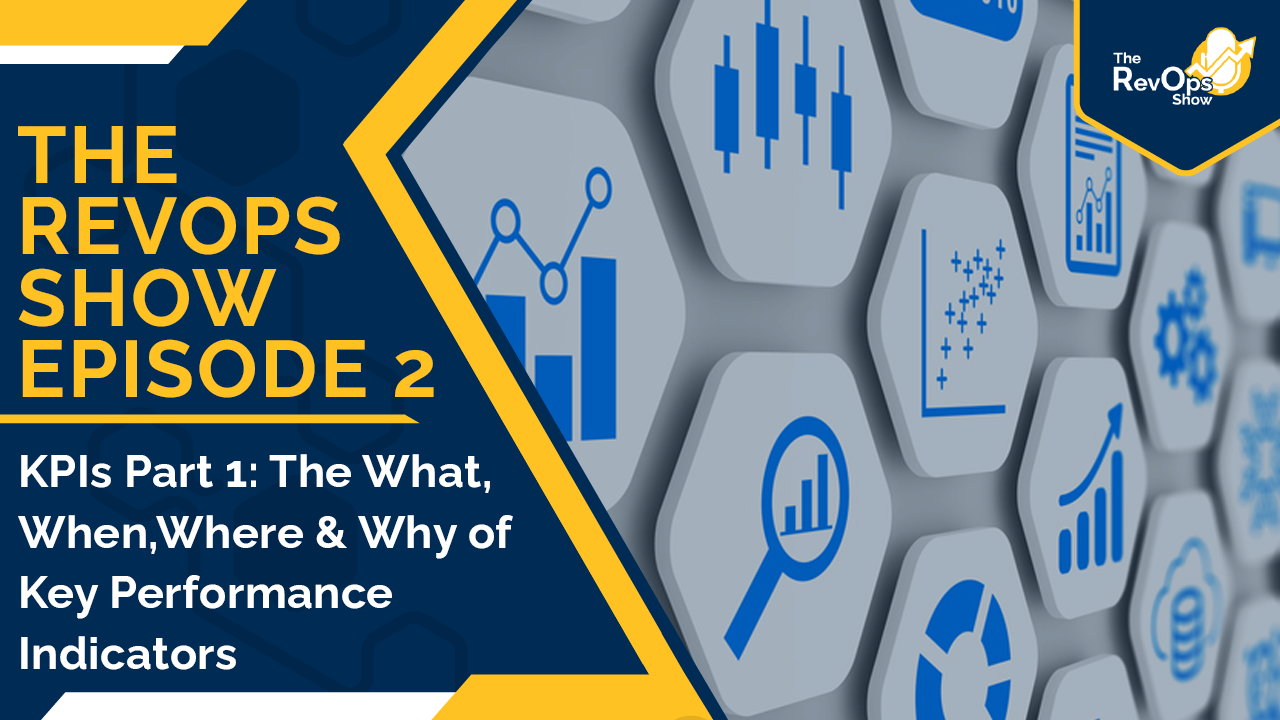Buckle in for this episode because we’re touching on a couple questions we deal with all the time around Key Performance Indicators (KPIs). So what is a KPI, why are they important and what common mistakes do companies have with KPIs? Find out below.
Audio:
Video:

Additional Resources:
Show Notes:
For starters, what is a Key Performance Indicator (KPI)? KPIs are connected to the outcomes that you’re seeking, and it has predictive powers. There are two types of indicators:
- Leading Indicators: picture of what’s likely to happen in the future
- Lagging Indicators: picture of what happened
One common mistake here is that we use lagging indicators too much.
KPIs will also be a metric of some form that gives you a signal, and a good KPI goes a long way to separating the signal from the noise. The indicator gives you cues for where to go, what to look for, and what adjustments to make.
A KPI should be tied to a SMART goal (Specific, Measurable, Attainable, Relevant, Time Bound). The individual KPI itself doesn’t necessarily tell us anything specific, but when you build KPIs together in order to get a whole picture, that’s where we need to focus. When it comes to your specific role, what’s the one key metric you’re looking at to give you an indication that something is happening? There could be a lot of things you focus on, but what is the one key thing?
When you talk about predicting the future, you’re talking about uncertainty. This is one place where people use KPIs; to create an illusion of certainty.
Why are KPIs important? Why is there focus on KPIs and why does everyone act like they are the most important thing? The reality is that every uses KPIs - whether they realize it or not. We can’t live without creating models, beliefs, and heuristics. So, if you don’t have a KPI, then you don’t know what to look for. If you don’t know what to look for, then you have to look for everything. If you have to look for everything, then you aren’t going to be able to do anything.
When we talk about hypothesis driven growth, it isn’t possible without indicators. We’re always operating on various models and you need KPIs because it’s the only way you can lasso incomprehensible, overwhelming chaos into a manageable, meaningful way to guide actions.
Be careful of the moment you set a KPI as a key measurable though, because you’re now influencing behavior which is going to influence outcomes. As a rule, less is better, so the fewer things you measure, the better. Simple is better.
If someone has to stop and think about the metrics and the KPI then you’re going to kill the velocity.
What are some of the most common mistakes that you’ve seen that organizations make when setting KPIs?
The first mistake is not having any KPIs. If you don’t have KPIs, one person is operating off of their own perception, which is constantly changing. If you’re not clear in the objective and the hypothesis behind what you’re doing, you’re going to start assessing different criteria every time.
Another mistake is being results based or activity based. By doing this you are isolating what outcomes are being influenced. For example, my objective is not to drive search traffic. My objective is to increase the volume of quality, so search traffic may be a KPI. You need to identify what are the outcomes, what are the efforts you are trying to achieve?
Where are the key places that a business should have KPIs?
It depends on the maturity/sophistication of the company, but Doug would start at the top and go down. Depending upon how the organization is structured, what’s the sales team, marketing team and success team? What are the different groups within those teams? What matters to them?
As this applies to RevOps, when you’re talking about establishing KPIs, that starts at the senior team, which is above RevOps. Your KPIs are driven by the key objectives, so once those are determined, they begin to spiral down within the revenue side. RevOps owns the mapping and tracking.
One of the biggest mistakes people make is measuring what’s easy. Really figure out what your objective is and then find what metrics or KPIs you should focus on.
Next Steps:
-
Follow Jess, Doug & Imagine on socials for updates on the show or other insights:
-
Subscribe to the show on Spotify & Apple Podcasts
-
Check out Let's Play RevOps on Twitch for more commentary on this topic
-
Listen to Episode 3: KPIs Part 2 - 4 Common Scenarios & Where to Start
